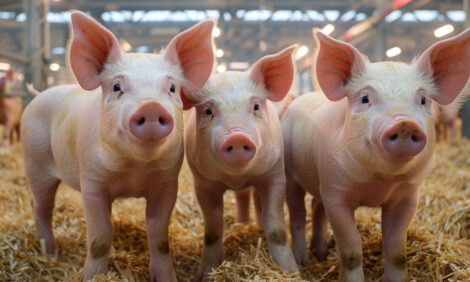



Urgency in US to prepare to respond to transboundary diseases
Swine veterinarians at AASV share BMP for biosecurity on-farm“On the human side, we have COVID-19 which serves to drive home the message that we need to be prepared and as an industry improve biosecurity,” said Dr. Holtkamp. “The session today was really about trying to do better.”
Speakers and key messages
Paul Sundberg, Director of the Swine Health Information Center (SHIC) – spoke about what SHIC is doing to help get the industry prepared for an outbreak of transboundary diseases.
Chelsea Ruston, post doc student at the Swine Medicine Education Center at Iowa State University - spoke about a rapid response programme that offers a standard approach to conducting outbreak investigations and doing biosecurity risk assessments to help the industry be prepared and to improve biosecurity so that we are less prone to outbreaks.
Veterinary practitioners Jay Miller with Maschhoff’s, Clayton Johnson with Carthage Veterinary Service, Katie Wedel with Iowa Select Farms and Kate Dion with Hanor Company – each described on-farm biosecurity activities they're recommending as practitioners working in larger production systems, including conducting internal investigations to identify where a farm’s vulnerabilities are and where their gaps are in biosecurity as well as trying to prioritise where it makes economic sense to make investments that will improve overall biosecurity.
“One of the themes we heard was that there’s a big opportunity to learn from mistakes when an outbreak happens but it only occurs if we take a rigorous approach to do just that - learn,” said Holtkamp. “We make mistakes all the time, but it doesn't guarantee that we're going to learn from it. The ability to spend some time trying to figure out what may have caused each outbreak really pays dividends in the long run.”
Identifying where a farm’s gaps are in biosecurity can provide a solid basis for doing a return on investment calculation. A thoughtful approach can help veterinarians and farm managers understand what’s a good long-term investment in biosecurity rather than quickly reacting and trying to do everything that might make a difference.
Need for standardised investigations
“We've been working for some time on the Rapid Response Program for SHIC. It's a very good programme, and we need to do a better job of getting industry buy-in and get more input from practitioners who will be using it,” he explained. “I laid out the case for developing an industry standard to conduct epidemiological investigations of outbreaks as well as doing proactive biosecurity assessments.”
By developing a standard, it’s possible to achieve better learning, not only from individual farms but lessons learned as an industry.
“We have a good foundation based on what we've already developed for the Rapid Response Program for SHIC,” Dr Holtkamp noted. “What I propose is to create biosecurity peer groups where we can improve the foundation that we already have and get better buy-in from veterinarians as well as producers.”
A standardised approach allows the information to be put into a database which allows the industry to begin to benchmark the data and compare outcome measures.
“You can't learn from history unless you've got information into a form that you can analyse down the road,” he noted. “However, we heard a lot of stories today that come from outbreak investigations, and I think those are important as well. We need to learn from each other's mistakes or the lessons that we all gained from doing these outbreak investigations. So, we need both - we need to set it up so that we can create a database of information that we collect, but the anecdotal stories are important as well.”
A realisation of the need for consistent data was an outcome of the a PEDV outbreak. Standardised forms and data collection would take US preparedness another step forward.
“In response to PEDV, the National Pork Board funded some outbreak investigations early on to try to learn how the virus was being transmitted from herd to herd and to try to identify some of the vulnerabilities in our biosecurity,” he explained. “Unfortunately, they were done by different veterinarians or academics, and they were each done very inconsistently. I was asked to summarise the investigation reports and there was just no way to do it.”
From that experience, Holtkamp says he learned the importance of standardisation of investigations to occur in order to prepare and be ready to conduct outbreak investigations as well as proactively be doing biosecurity assessments right now.









